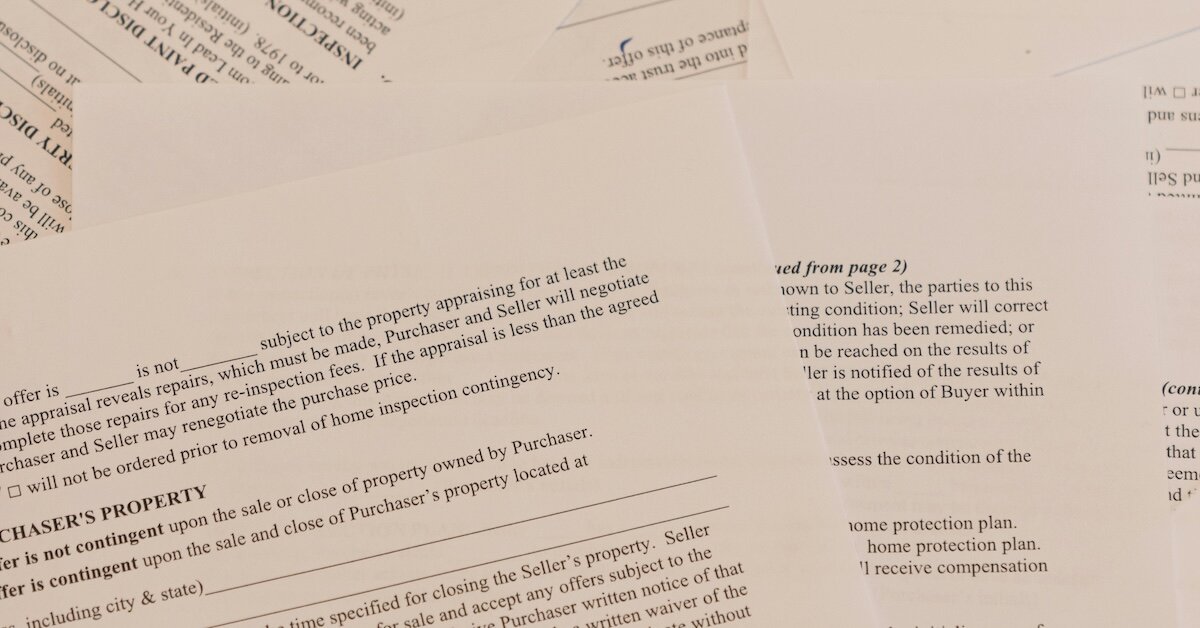What is a Reciprocal Easement Agreement?


In commercial real estate, understanding the intricacies of property agreements is crucial for successful transactions and developments. One such important agreement is the Reciprocal Easement Agreement (REA), which plays a vital role in coordinating multiple property owners within integrated projects.
An REA is a legal contract that allows multiple property owners to develop and operate their individual parcels as a unified project. These agreements establish binding obligations that apply to both current and future property owners.
Understanding Reciprocal Easement Agreements (REAs)
Definition and purpose of REAs
Reciprocal Easement Agreements are legal contracts that enable multiple property owners to develop and operate their individual parcels as one cohesive project. These agreements create binding obligations that 'run with the land,' applying to both current and future property owners. REAs serve three key purposes:
- Shared Access: Allowing property owners to share access to essential elements like parking and utilities
- Consistent Standards: Establishing consistent standards for construction and maintenance
- Coordinated Development: Ensuring coordinated development of multiple parcels
In retail developments, for example, REAs commonly arise when different entities own portions of a shopping center. Without an REA, each party could potentially build whatever they want, potentially blocking others' access to critical infrastructure.
Key components
A well-crafted Reciprocal Easement Agreement contains several essential components that work together to create binding obligations between property owners. These typically include:
- Access provisions ensuring unobstructed entry to driveways, walkways, and roads
- Parking allocations specifying where customers and employees can park
- Common area usage rights covering shared spaces like lobbies and outdoor areas
- Maintenance cost responsibilities, usually allocated based on the proportion of land owned or space occupied
- Architectural consistency requirements to ensure compatible design across the development
- Signage regulations governing size and placement of signs
- Amendment procedures specifying how changes to the agreement can be made
Additionally, REAs often incorporate provisions for insurance coverage, tax obligations, and mechanisms for resolving disputes between property owners.
Types of properties that commonly use REAs
Reciprocal easement agreements are most frequently implemented in:
- Retail developments, particularly shopping centers with multiple property owners
- Office complexes where properties share common parking lots, access roads, and common areas
- Mixed-use developments requiring coordinated guidelines for signage, architectural design, and community-wide improvements
- Commercial properties with shared utilities, parking facilities, or those requiring consistent maintenance standards across multiple parcels
These agreements are particularly beneficial for shopping centers with multiple anchor tenants, as they ensure coordinated development and prevent any owner from blocking others' access to essential facilities.

Legal Aspects of Reciprocal Easement Agreements
Enforceability
REAs derive their enforceability from being recorded in local land records, creating binding obligations that run with the property. While courts have traditionally preferred injunctive relief to enforce REAs, recent cases show this isn't guaranteed. A landmark 2015 case demonstrated that courts may consider practical market realities when deciding enforcement methods.
The agreements remain enforceable through both the property owners and any established commercial owners association, with provisions typically applying to all occupants, users, and tenants within the properties. However, modifying existing REAs can be complex, time-consuming, and expensive.
Rights and obligations under an REA
REAs establish specific rights and obligations that bind all property owners within the development. These typically include:
- Easements for essential access, including vehicular parking, pedestrian walkways, and utility connections
- Obligations to maintain building appearance and pay allocated property taxes
- Requirements to carry appropriate insurance coverage
- Contributions to common area maintenance costs based on proportional ownership or occupied space
- Submission of construction and modification plans for review to ensure architectural compatibility
In some cases, major retailers may have special rights regarding property use and potential sale, including rights of first offer if another party wishes to sell their parcel.
Potential legal challenges
Implementing REAs presents several significant legal challenges that property owners must navigate carefully:
- Enforcement mechanisms: Recent precedents suggest injunctive relief isn't guaranteed for REA violations, as courts may consider market realities when determining appropriate remedies.
- Modification difficulties: Changes to existing REAs typically require unanimous approval from all property owners, making amendments complex and expensive.
- Property subdivision complications: When one party's property is later divided into multiple parcels or owned by different entities, the REA must clearly specify who retains amendment and approval rights.
- Default scenarios: REAs must include specific provisions for notifying and allowing lenders to cure defaults while protecting their security interests in the property.

Benefits of Reciprocal Easement Agreements in CRE
Facilitating integrated development projects
REAs enable multiple property owners to develop and operate their individual parcels as one cohesive project, establishing essential frameworks for shared development. These agreements define how owners will allocate development costs, particularly for common infrastructure. Each party typically gets review and approval rights over construction plans to maintain architectural compatibility, while the REA establishes schedules and cost-sharing mechanisms for development work.
For multi-use projects, these agreements help coordinate community-wide improvements like private roadways and utility lines that serve multiple properties, defining both construction responsibilities and ongoing maintenance obligations.
Ensuring consistent property maintenance
REAs establish clear standards and responsibilities for maintaining common areas across multiple properties. The agreement typically requires one party to operate, maintain, and repair shared spaces like parking lots, sidewalks, landscaping, and lighting to first-class retail development standards. Maintenance activities often include:
- Regular cleaning and sweeping
- Debris removal
- Snow clearing
- Lighting maintenance
- Landscaping upkeep
- Traffic supervision
To ensure consistent quality, REAs usually require all repairs and replacements to use materials equal to or better than the original to maintain architectural harmony.
To ensure consistent quality, REAs usually require all repairs and replacements to use materials equal to or better than the original to maintain architectural harmony.
Enhancing property value and marketability
Reciprocal easement agreements significantly enhance property value and marketability by establishing clear operational frameworks that benefit all parties.
These agreements create a unified development appearance and functionality, ensure essential access to parking, utilities, and common areas, maintain consistent standards across the development, provide crucial assurances regarding unimpeded access, establish predictable cost-sharing mechanisms for maintenance and improvements, and help maintain the property's first-class appearance over time.

Negotiating and Drafting Effective REAs
Essential REA clauses
A well-crafted REA requires several essential clauses to function effectively. On your agreement checklist, you should include:
- Clear easements for parking, access, encroachments, and utilities
- Construction and architectural compatibility clauses
- Operation of common areas provisions
- Specific terms for taxes, building maintenance, and insurance
- Use restrictions, recapture rights, and rights of first offer (if applicable)
- Explicit statement that obligations 'run with the land'
- Clear amendment procedures
- Mortgagee protection provisions allowing lenders to cure defaults
Balancing interests of multiple property owners
Balancing multiple property owners' interests in an REA requires careful consideration of each party's rights and obligations. The agreement must establish clear mechanisms for review and approval of construction plans while defining schedules and cost-sharing arrangements that protect all parties' interests. Additionally, the REA needs to evolve with changing market conditions, as recent cases demonstrate that courts now consider practical market realities when determining enforcement methods.
Common pitfalls to avoid
When negotiating REAs, some common yet critical pitfalls can hamstring conversations and cause issues down the line.
One common mistake is overlooking enforcement mechanisms and their potential limitations, which can create challenges if disputes arise. Additionally, failing to address property subdivision scenarios and associated approval rights can lead to conflicts when ownership structures change.
Neglecting to include specific provisions for default scenarios and lender protections may expose parties to financial and legal risks. All parties should clearly define review and approval rights for construction plans to ensure architectural consistency and prevent conflicts between property owners.
Finally, overlooking the need for flexibility to adapt to changing market conditions can make it difficult to modify the agreement as industry trends and property uses evolve.

How REAs Impact Commercial Real Estate Transactions
Due diligence
REAs play a key role in commercial real estate due diligence by establishing binding contractual obligations that run with the land. During due diligence, buyers must carefully review how the REA allocates rights and responsibilities between parties, particularly regarding access to parking, utilities, and common areas. The agreement's enforceability depends on proper recording in local land records, making verification of registration status a key due diligence step.
REAs and property financing considerations
Any REAs can significantly impact property financing by establishing clear operational frameworks that lenders evaluate. The agreements must include specific mortgagee protection provisions requiring non-defaulting parties to notify defaulting parties' lenders and allow them time to cure defaults. These provisions ensure that REA covenant breaches won't invalidate liens made in good faith by lenders against any portion of the property.
Property management and operations
REAs create lasting operational frameworks that shape property management for decades. The agreements establish permanent mechanisms for shared maintenance responsibilities, with costs typically allocated based on proportional ownership or occupied space. This ongoing cost structure directly impacts a property's net operating income and valuation metrics that guide future management decisions.
The agreements' architectural consistency requirements ensure buildings maintain their intended character over time, while common area maintenance standards preserve the property's functionality and appearance. If a retailer ceases operations for an extended period, some REAs include recapture provisions allowing developers to purchase that parcel at fair market value to maintain the development's intended use and operational harmony.
Ready to research? Conduct thorough due diligence on your next commercial property investment with Crexi Intelligence.









